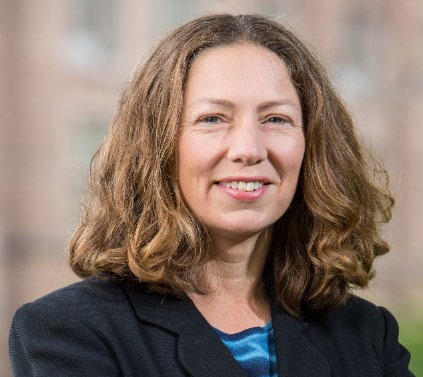2022 Dennis & Leslie Drag Distinguished Lecture
Simulation to Advance Seismic Design and Performance Assessment
A Presentation by Laura N. Lowes
Chair and William M. and Marilyn M. Conner Professor
Department of Civil and Environmental Engineering
University of Washington, Seattle, Washington
March 10, 2022
Abstract
Today, multiple research efforts within the natural hazard engineering community seek to advance simulation workflows to characterize regional risk and resilience. These regional simulations are massive, including multiple large data sets (e.g., expected earthquake ground motion at a 1 km grid spacing and regional characterization of the built environment) and multiple software platforms (e.g., software to simulate response as well as expected damage and functionality of individual structures and infrastructure systems). However, at the heart of improving community resilience to natural hazard events is the need to advance design practice to ensure that individual structures and systems reliably provide expected response and performance under natural hazard loading.
Advances in software, numerical models, and computing resources make possible the use of numerical simulation as an independent research tool that enables investigation of component- and system-level behavior and performance to advance design and retrofit of structures for earthquake and other natural hazard loading scenarios. However, the application of numerical simulation in this role requires extensive, and sometimes continued, calibration and validation using extended experimental data sets as well as efforts to clearly establish the limitations and the range-of-applicability of the models. The results of several recent projects to calibrate, validate, and ultimately apply numerical models for simulation of concrete wall and walled-building response to earthquake loading will be presented. Several of these projects employ continuum-type nonlinear analysis to investigate load-transfer and failure mechanisms within solid and perforated planar and non-planar concrete walls subjected to gravity and simplified lateral loading and to develop data supporting new design requirements for structural concrete walls. Several of these projects employ line-element modeling to investigate the behavior of concrete walled buildings subjected to earthquake ground motions and develop data supporting new design requirements for walled buildings in general and coupled-walled buildings in particular.
Ultimately, research efforts by small research teams to advance numerical simulation of individual structures provide improved modeling approaches for large-scale regional simulations. The lecture will conclude with a discussion of mechanisms for individuals to contribute to and collaborate with larger community efforts to advance simulation of regional risk and resilience to natural hazards.

Speaker Bio
Dr. Lowes is the Department Chair and William and Marilyn Conner Endowed Professor of Civil and Environmental Engineering at the University of Washington. Her research seeks to advance structural engineering, and earthquake engineering in particular, through the development and application of numerical simulation. Her research has addressed investigation of component response to earthquake loading using laboratory testing and high-fidelity numerical simulation, with the objective of developing understanding and data that can support model development. Her research has resulted in a number of component models that are appropriate for use in simulating the earthquake response of buildings and bridges, including models that simulate the nonlinear response of concrete beam-column joints, columns and walls as well as steel plates in SPSWs. These models are implemented in the OpenSees analysis platform to enable use by the research community. Her research has resulted also in recommendations for nonlinear analysis of building systems that are used by the professional community in performance-based seismic design of tall buildings. Currently, Dr. Lowes holds leadership roles in three NSF-sponsored Natural Hazard Engineering Research Infrastructure (NHERI) facilities: the NHERI Simulation Center, the Design-Safe Cyber-Infrastructure facility, and the Post-Disaster Rapid Response Research (RAPID) facility.

